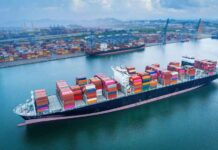Global companies have long relied on procurement networks that span the globe, allowing them to source goods and materials at the lowest cost, with the best quality, and the speediest delivery. This traditional approach to supply chain management depends on a stable geopolitical landscape and a global trade system that facilitates the free movement of goods and capital. However, these assumptions no longer reflect the current realities of global business.
In today’s world, companies face a more complex and unpredictable landscape, marked by armed conflicts, trade wars, sanctions, export controls, and other developments driven by geopolitics. These factors introduce new risks and challenges for supply chain management. As a result, CEOs must now strike a difficult balance: reducing procurement costs in a time of high inflation while ensuring that supply chains remain resilient in the face of geopolitical risks. To address this, many companies are shifting towards regional sourcing strategies.
However, finding the right balance between cost, risk mitigation, and market access remains challenging. Global supply chains, built primarily for efficiency and cost savings, remain vulnerable to trade disruptions, with significant financial implications. Supply shocks can lead to higher material and shipping costs, factory shutdowns, delivery delays, damage to brand reputations, and lost revenue as businesses scramble to find alternative suppliers for critical goods and components.
One of the main reasons why supply chain management is struggling is that risk management has often been an afterthought, overshadowed by the focus on cost optimization and efficiency. As a result, many companies react to crises only after the damage has been done. Moreover, many businesses have not adequately prepared for sudden policy changes, such as tariff increases and restrictions on high-tech trade and investment, which can disrupt long-established supplier relationships.
To prepare for the unexpected, companies must establish robust systems for assessing and monitoring their exposure to geopolitical risk while building supply chain resilience. This requires a shift towards a more holistic approach to supply chain management—one that considers not only cost, quality, and delivery but also supply risk, sustainability, market access, and innovation. By adopting a “best value” approach, companies can create more resilient and sustainable supply chains that are better positioned to handle geopolitical disruptions.
The Importance of Managing Geopolitical Risk
Recent events have highlighted the severe consequences of geopolitical disruptions on supply chain management. For example, the war in Ukraine quickly impacted European industries by cutting off access to Russian natural gas and industrial components like automotive wiring harnesses. Similarly, attacks by Houthi militias on cargo ships in the Red Sea—a critical marine transit route—led to increased shipping costs and inventory shortages in Europe for goods imported from Asia.
Trade tensions and nationalistic industrial policies have also upended global sourcing strategies. Sharp tariff hikes and outright bans on Chinese goods, such as solar panels, lithium-ion batteries, and washing machines, have raised prices and forced companies to seek alternative sources. Meanwhile, potential changes to the US–Mexico–Canada Agreement (USMCA) could affect the economics of using Mexico as a nearshore manufacturing hub for the US market, impacting already committed factory investments.
Geopolitical tensions could also threaten manufacturers’ access to critical minerals used in electronic and renewable energy products, which are often mined or processed in a small number of countries. As governments promote strategic industries through industrial policies and incentives, companies must evaluate both the risks and opportunities created by these geopolitical dynamics.
In addition to trade tensions, companies must closely monitor regulatory developments. The European Union’s Carbon Border Adjustment Mechanism (CBAM) requires importers to report the greenhouse gas emissions associated with imported materials. Eventually, the EU will impose carbon levies on goods whose countries of origin do not have a carbon pricing system in place. The EU’s Corporate Sustainability Due Diligence Directive, expected to take effect in 2027, will also require large companies to monitor and mitigate risks related to human rights violations and environmental regulations in their supply chains.
Developing a Best-Value Sourcing Strategy
In response to these challenges, companies need to shift from a traditional best-cost approach to a best-value approach in their supply chain management strategies. A best-value approach takes into account a broader range of factors, beyond just cost, when selecting suppliers and sourcing locations. Companies can develop a scorecard that considers six key value drivers for sourcing:
- Cost: In addition to direct costs like labor, land, energy, taxes, shipping, and tariffs, companies should consider factors that could change those costs, such as labor shortages that could drive up wages.
- Delivery: Companies must estimate the time required to manufacture, ship, and clear customs for goods to reach their destination. They should also evaluate the quality of the logistics infrastructure in each location.
- Sustainability: Environmental, social, and governance (ESG) criteria are becoming increasingly important in many markets. Companies should consider factors such as carbon emissions, labor practices, and the sourcing of agricultural products.
- Risk: Companies must evaluate the risks associated with geopolitics and trade tensions under different scenarios. Natural events such as earthquakes, floods, and extreme heat waves should also be considered.
- Quality: The quality management record of suppliers, their compliance capabilities, and the quality of the labor force in the sourcing country are crucial factors to assess.
- Supplier Innovation: Companies should assess the research and development (R&D) capabilities and intellectual property protections of suppliers and the countries where they are based.
The weight assigned to each of these drivers will depend on the company’s products, goals, and competitive position. While the lowest-cost country may still be the best option for very price-sensitive goods, companies that prioritize sustainability may opt to pay more for greener products. For instance, a mill in Asia may offer cheaper steel, but a European importer might prefer to pay a premium for “green steel” from the EU to avoid high carbon taxes under CBAM.
Similarly, perceived risk plays a significant role in decision-making. Companies that anticipate high risks of armed conflict or trade disruptions may be more willing to pay a risk premium to secure alternative suppliers.
Managing Geopolitical Risk in Supply Chain Management
To effectively manage geopolitical risks in supply chain management, companies should adopt a three-step approach:
- Monitor Global Developments: Companies need a system for continuously tracking geopolitical risks. This system should not only monitor current events but also anticipate potential future risks. Businesses should focus on both unpredictable black-swan events and grey-rhino events—clear risks that are often ignored until they become crises. Creating a geopolitical risk heat map can help companies assess the potential disruptions in specific countries and product categories. Tailoring this map to reflect risks associated with particular goods, such as energy or raw materials, can provide valuable insights for decision-making.
- Develop Scenarios for Key Risks: Companies should develop scenarios for the most significant geopolitical risks, complete with signposts, key performance indicators (KPIs), and contingency plans. This preparation allows companies to act quickly and effectively when faced with geopolitical disruptions.
- Improve Supply Chain Transparency: A clear and up-to-date understanding of the global footprint of the entire supplier network is essential for managing geopolitical risk. Companies should assess the geopolitical exposure of both tier-one and tier-two suppliers and evaluate their importance to business continuity. Suppliers with diversified manufacturing operations across multiple countries may offer greater resilience than those concentrated in one high-risk region. If a critical supplier operates in a country with high geopolitical risk, it may be necessary to reassess the business relationship or encourage the development of alternative suppliers.
Strategies for Building a Resilient Global Supply Chain
The most straightforward strategy for addressing geopolitical risk is to diversify sourcing and production across multiple countries. The current trend toward regionalizing and diversifying supply chain management reflects this approach. For instance, companies like Intel have stockpiled semiconductors to guard against future shortages, while others are embedding ESG criteria into procurement processes to prepare for regulatory changes.
Several other strategies can help mitigate geopolitical risk:
- Extend the Supply Base: Establishing a network of suppliers across different countries can reduce the likelihood of shortages of critical parts and materials. Companies like Apple and Tesla have diversified their manufacturing operations to multiple countries to improve resilience.
- Deepen Supplier Relationships: Strong ties with suppliers can help companies anticipate and respond to geopolitical risks. Suppliers with close relationships are more likely to provide advance warnings of policy shifts or disruptions and prioritize critical customers during shortages.
- Optimize Specifications: In some cases, companies can adjust their product designs to reduce reliance on specific suppliers or materials that are vulnerable to geopolitical risks. For example, Tesla redesigned its products to use simpler chips during the global semiconductor shortage, keeping production on track.
- Vertical Integration: Companies can reduce geopolitical risk by acquiring capabilities that are currently outsourced to suppliers. For instance, automakers have invested in lithium mining and battery manufacturing to secure a stable supply of critical materials.
Building Geopolitical Muscle
Effective management of geopolitical risk requires more than just procurement strategies. Companies need to build organizational capabilities for geopolitical analysis and risk management. By training procurement professionals to interpret geopolitical data, companies can make faster, more informed decisions when faced with disruptions.
Cross-functional collaboration is also essential. Insights from geopolitical risk analysis should inform not only supply chain management but also financial planning, strategic development, and customer relations. Best-in-class companies use digital risk monitoring systems to keep track of supplier exposure to geopolitical risk and ESG performance.
In today’s unpredictable global market, resilient supply chain management is no longer just about cost and efficiency. It’s about building a robust network that can withstand geopolitical shocks and ensure business continuity. By adopting a holistic and strategic approach, companies can create more resilient supply chains that provide greater value, sustainability, and competitive advantage.

























